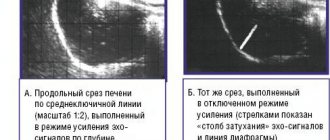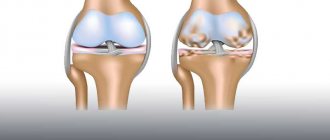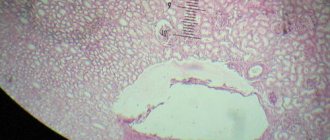Published: 10/15/2021 16:40:00 Updated: 10/15/2021
Hypertension, or arterial hypertension, is a condition characterized by a stable increase in blood pressure, that is, detected through repeated measurements. Accompanying many diseases, it is considered a risk factor for the development of dangerous complications from the cardiovascular system, including stroke and myocardial infarction. Hypertension, as the main cause of the pathology in question, requires taking medications, normalizing the patient’s lifestyle and nutrition.
Blood pressure is the force with which circulating blood acts on the walls of blood vessels. This pressure at the moment of contraction of the heart is called systolic, and during the period of its relaxation - diastolic. The range of normal values for these indicators is quite wide.
In the course of numerous observations [1], scientists came to the conclusion that the risk of cardiovascular complications increases with each additional increase in blood pressure by 10 mmHg. Art. already starting from the level of 115/75 mm Hg. Art. However, drug reduction of pressure only above 140/90 mm turned out to be advisable. Hg Art., therefore, this value is taken as the criterion for determining arterial hypertension.
What is hypertension?
A syndrome in which there is a regular, long-term and persistent increase in blood pressure is called “arterial hypertension” or “hypertension”. This syndrome may appear:
- in case of hypertension (HTN) - a primary independent disease;
- for secondary (symptomatic) hypertension , which is a consequence of disruption of the functioning of various organs - kidneys, adrenal glands, thyroid gland and others.
Hypertension accounts for the majority of cases of hypertension. The etiology of hypertension is not reliably known, but it is based on primary functional disorders of the systems that regulate blood pressure.
Risk factors for developing hypertension include:
- hereditary predisposition;
- a sedentary lifestyle, which reduces the body’s adaptive capabilities and disrupts the functioning of the circulatory system;
- high body mass index. In obese people, the risk of developing hypertension increases 2-6 times;
- excess salt in the diet, which leads to the accumulation of excess fluid in the body, which increases the load on the cardiovascular system;
- drinking alcohol, smoking;
- elderly age. The older a person gets, the higher their risk of developing the disease.
It turns out that in most cases, bad habits lead to hypertension - physical inactivity, overeating, poor nutrition, nicotine and alcohol addiction. That is why hypertension is considered a pathology directly related to lifestyle, and changing it for the better is the main element of successful treatment.
Causes
In approximately 90% of cases, the cause of a stable increase in blood pressure is hypertension. This diagnosis is made to the patient when no other diseases accompanied by hypertension are found during the examination. Among the latest:
- kidney pathologies – pyelonephritis, glomerulonephritis, polycystic disease, diabetic nephropathy, renal artery stenosis;
- endocrine disorders - neoplasms of the adrenal glands, pancreas or pituitary gland, hyperfunction of the thyroid gland, Cushing's disease or syndrome, pheochromocytoma;
- obstructive sleep apnea syndrome;
- valve defects or atherosclerotic lesions of the aorta.
Regular use of some medications can also cause high blood pressure.
These include oral contraceptives, non-steroidal anti-inflammatory drugs, amphetamines, corticosteroids, drugs containing erythropoietin, cyclosporine, cocaine. The likelihood of developing cardiovascular diseases, including hypertension, is closely related to the following risk factors:
- unhealthy diet, including excess amounts of table salt, saturated fats and trans fats, lack of leafy greens, vegetables and fruits in the diet;
- obesity;
- pathologies of the heart and blood vessels in close relatives;
- age over 65 years;
- sedentary lifestyle;
- chronic stress;
- bad habits – smoking, excessive alcohol consumption.
What blood pressure is considered high?
Blood pressure is a factor that gives the specialist important information about the functioning of the circulatory system. Blood pressure levels are affected by:
- The magnitude of cardiac output, which in turn depends on the contractility of the left ventricle of the myocardium, heart rate and other parameters.
- Total peripheral vascular resistance (TPVR) is an indicator that reflects the ability of blood vessels to resist blood pressure from the inside. OPSS depends on the tone, stiffness of blood vessels, and blood viscosity.
- Circulating blood volume.
Blood pressure has upper and lower limits. The upper pressure is called "systolic", the lower - "diastolic". The first value reflects the force of blood pressure in the arteries during myocardial contraction, the second - at the moment of relaxation of the heart muscle.
The ideal pressure is considered to be 120/80 mm Hg. Art. Depending on the individual characteristics of a person (gender, age, physical activity), a slight deviation of these values down or up is allowed. However, in any person, blood pressure should not exceed 140/90 mmHg. Art. Higher levels are potentially dangerous and can lead to functional and organic damage to target organs.
Stages of pathology
Depending on the degree of increase in blood pressure, three stages of hypertension are distinguished ⇓⇓⇓
First stage of headache
In the first stage of hypertension, high blood pressure can independently return to normal values. As a rule, at this stage of the disease, target organs are not affected and there are no complications.
Second stage of headache
At the second stage of hypertension, a person may experience various pathological changes:
- thickening of the walls of the left ventricle of the myocardium, which often leads to heart failure and coronary heart disease;
- atherosclerosis - the formation of atherosclerotic plaques on the walls of blood vessels that impair blood circulation;
- retinal angiopathy is a violation of the tone of the vessels that supply the iris of the eye.
At the second stage of hypertension, normalization of blood pressure is possible only with the help of medications.
Third stage of headache
The third stage of hypertension can lead to severe complications:
- stroke - acute disruption of blood supply to the brain;
- aortic dissection - rupture of the largest artery. If the aortic wall is completely ruptured, massive blood loss occurs;
- myocardial infarction - necrosis of a section of the heart muscle;
- renal failure - decreased excretory capacity of the kidneys.
In the third degree of hypertension, blood pressure is difficult to normalize even with the help of medications. A person may experience hypertensive crises, during which blood pressure rises sharply and urgent medical attention is required.
How to treat hypertension at all stages
It is necessary to provide treatment at the earliest stage - immediately after an episodic increase in pressure is noticed, preventing the development of the disease. In the treatment of hypertension, doctors of the Federal Scientific and Clinical Center FMBA are guided by the latest recommendations of the European Society of Cardiology and the European Society of Arterial Hypertension (2018).
Hypertension 1st degree
Treatment of stage 1 hypertension should begin with modification of the patient’s lifestyle. By contacting our center, you will receive detailed recommendations on lifestyle changes that will help prevent early symptoms of high blood pressure and slow down the progression of the disease. The high risk of developing cardiovascular complications, the presence of several predisposing factors, as well as severe concomitant diseases are the basis for starting drug therapy, regardless of the degree of hypertension.
Hypertension 2 degrees
Regular increases in blood pressure to high levels and the first signs of target organ damage serve as the basis for the mandatory prescription of drug therapy. Stage 2 hypertension, in addition to lifestyle modification and diet, requires constant use of at least two medications.
Treatment of hypertension, in accordance with European recommendations, includes taking several classes of medications:
- angiotensin-converting enzyme inhibitors (captopril, enalapril, perindopril, zofenopril, etc.);
- angiotensin 2 receptor antagonists (valsartan, losartan);
- diuretics (hypothiazide, spironolactone);
- beta-blockers (bisoprolol, carvedilol);
- calcium channel blockers (amlodipine, klentiazem).
Hypertension 3 degrees
Treatment of advanced hypertension also begins with at least two drugs, but most often at stage 3 this combination is ineffective and another drug is added to the regimen. The specific treatment regimen is determined by the doctor, taking into account examination data and the stage of development of hypertension. Often, a specific cause for a persistent increase in blood pressure is identified, which can be eliminated.
Important! Hypertension of the 3rd degree requires lifelong use of medications; it is impossible to cure this disease completely with medication. The patient must regularly visit the doctor to assess the effectiveness of treatment and adjust drug doses.
The goal of therapeutic measures is to achieve a target blood pressure level of 130-140/80-85 mmHg. Art. You can consult a doctor and undergo a course of treatment for hypertension at our medical center.
What symptoms may indicate hypertension?
As a rule, the disease is asymptomatic for a long time. In some cases, increased pressure is accompanied by:
- frequent heart rate;
- headaches, dizziness;
- weakness, fatigue;
- redness of the facial skin;
- increased sweating;
- blurred vision, ringing in the ears.
However, such symptoms are not specific to hypertension and may be signs of other diseases or fatigue. Therefore, pathology can be detected at an early stage only by regularly measuring blood pressure.
Symptoms of hypertension
The severity of the manifestations of hypertension depends on the level of pressure and the involvement of target organs in the pathological process. The latter include the brain, kidneys, heart, blood vessels and retina.
It should be noted that (hypertension) is most often asymptomatic, so the only way to detect an increase in pressure is to measure it with a tonometer.
According to the degree of blood pressure increase:
| Blood pressure categories | SBP, mmHg | DBP, mm Hg. |
| Optimal blood pressure | <120 | <80 |
| Normal blood pressure | 120–129 | 80-84 |
| High normal blood pressure | 130–139 | 85-89 |
| AH I degree of severity | 140–159 | 90-99 |
| AH II severity | 160–179 | 100-109 |
| AH III degree of severity | ≥180 | ≥110 |
| Isolated systolic hypertension* | ≥140 | <90 |
In some cases, the disease manifests itself as ailments:
- headache;
- decreased performance;
- rapid heartbeat or, conversely, weak;
- dizziness;
- anxiety;
- facial redness;
- numbness of fingers;
- swelling of the limbs, eyelids, face;
- chills;
- sweating
The longer and more severe the hypertension, the more dangerous the consequences of the disease.
How is the disease diagnosed?
To diagnose arterial hypertension, a doctor needs to take several blood pressure measurements at different times of the day. If necessary, a specialist can prescribe ABPM - an instrumental study in which blood pressure is monitored throughout the day using a special device.
Differential diagnosis of hypertension occurs as follows:
- An examination of organs whose pathologies could cause increased blood pressure is performed. For example, the examination may include an ECG, ultrasound of the kidneys, and fundus examination.
- If secondary hypertension is excluded and a specific cause for the increase in blood pressure is not found, then a diagnosis of hypertension is made.
Prevention measures
Measures to prevent hypertension include:
- regular physical activity;
- giving up alcohol and smoking;
- balanced diet.
- dosed consumption of table salt (no more than 5 g per day).
Also, do not forget to regularly measure your blood pressure with a tonometer, which will allow you to notice its increase in time and seek medical help.
Why is hypertension an issue in low- and middle-income countries?
The prevalence of hypertension varies across regions and countries of different income categories. Hypertension is most prevalent in the WHO African Region (27%) and lowest in the Region of the Americas (18%).
The number of adults with hypertension increased from 594 million in 1975 to 1.13 billion in 2015, primarily in low- and middle-income countries. This increase is mainly due to increased risk factors for hypertension among the populations of these countries.








